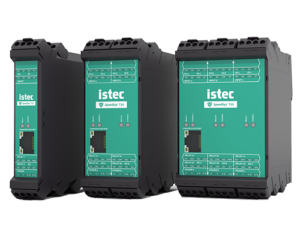Hydropower plants rely on the precise operation of rotating machinery, such as turbines and generators, to efficiently convert water energy into electricity. To ensure this process runs safely and efficiently, engineers depend on hydro turbine speed monitoring. This technique is essential for maintaining plant reliability, optimizing maintenance, and preventing mechanical failures. This article explains three critical reasons to implement hydro turbine speed monitoring: reverse rotation, standstill/creep, and underspeed.
1. Prevent reverse rotation and protect critical components
Reverse rotation occurs when pressure conditions or backflow from residual water cause a turbine to spin in the opposite direction. Leakage or incorrect sequencing can also trigger this issue. As a result, reverse rotation places excessive stress on bearings and couplings. It accelerates wear, causes blade fatigue, damages generators, and may even lead to complete turbine failure.
In addition, reverse rotation increases maintenance needs and can cause unplanned downtime. Hydro turbine speed monitoring detects reverse rotation in real time. Engineers can then take immediate corrective actions to protect critical components.
2. Detect standstill and creep to ensure maintenance safety
Before maintenance or a turnaround, the turbine must come to a full stop. The large mass of the rotor creates serious hazards if it continues to rotate slowly during maintenance. Mechanical brakes often prove ineffective at low speeds. Therefore, speed monitoring becomes essential to confirm a true standstill.
These systems verify that the turbine has fully stopped. They also detect creeping motion that could endanger personnel and prevent unintended rotation. By implementing hydro turbine speed monitoring, engineers improve safety and allow maintenance to proceed without risk.
3. Monitor underspeed to avoid instability and performance loss
Underspeed happens when a hydro turbine fails to maintain its minimum required RPM. This often leads to process inefficiencies and operational disruptions. For example, low speed can cause harmful vibrations, insufficient cooling, and mechanical instability.
Some systems respond by triggering automatic shutdowns when critical underspeed limits are reached. Through hydro turbine speed monitoring, engineers identify deviations that reduce efficiency. They can then take action to stabilize operation and avoid production losses.
Reliable hydro turbine speed monitoring systems for long-term teliability

Speed monitoring plays a vital role in protecting mechanical systems, optimizing workflows, and improving plant reliability. Engineers who oversee hydropower operations benefit greatly from advanced systems like the Istec SpeedSys tachometers.
By using these solutions, they can proactively detect potential issues, reduce downtime, and extend the lifespan of hydro turbines. The Istec SpeedSys line includes compact, high-integrity systems that provide real-time speed data with minimal installation effort.
These tachometers deliver accurate and fast speed readings. As a result, turbines operate safely within defined parameters and remain protected against issues like reverse rotation, standstill, and underspeed. Furthermore, for SIL-compliant applications, engineers often use multiple redundant sensors to ensure full system reliability.

